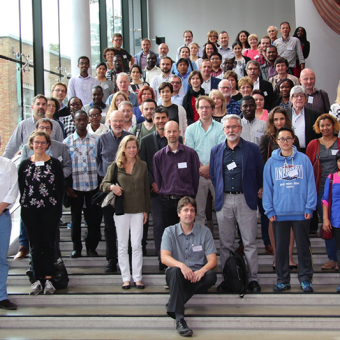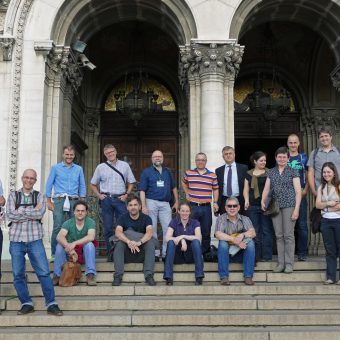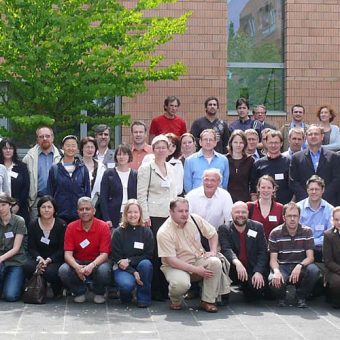Structure
Since the establishment of the working group in 2003, the following objectives have been followed (see Profile 34, pdf):
- Exchange and dissemination of scientific knowledge on the ecological impact of GM crops and other applications of modern biotechnology in agriculture
- Evaluation of the compatibility and integration of products derived from modern biotechnology with biological control and IPM
- Resistance management of the target organisms
- Development and harmonisation of methods for testing the ecological impact of products derived from modern biotechnology
The group is open to basic and applied scientists from public research institutions, regulatory agencies, and the private sector.
To maintain independence from commercial interests, meetings and other activities of this working group have been organized without funding from the private sector (read open letter to EFSA, pdf).
Activities
Working group meetings are organized at two- to three-year intervals. An organizing committee is installed for each meeting. Meeting proceedings are published in the IOBC-WPRS Bulletin.
The convenor of the WG from 2003 to 2013 was Jörg Romeis from Agroscope, Switzerland. Since 2013, Michael Meissle from the same institution is leading the group.
In 2021, the WG was renamed from “GMOs in integrated plant production” to “Modern biotechnology in integrated plant production” to broaden the scope for agricultural applications of biotechnology that do not lead to genetically modified organisms.
Achievements
Eight working group meetings have been organized between 2003 and 2018.
- 2003: Prague, Czech Republic
- 2005: Lleida, Spain
- 2007: Warsaw, Poland
- 2009: Rostock, Germany
- 2011: České Budějovice, Czech Republic
- 2013: Berlin, Germany
- 2015: Sofia, Bulgaria
- 2017: Ghent, Belgium
Guidelines for non-target risk-assessment of GMOs and regulation were the focus of a special WG activity from 2006 to 2013. The participants developed a generic risk assessment concept for non-target organisms (Romeis et al., 2008), guidance and recommendations on experimental design for early tier laboratory studies (Romeis et al. 2011, open access), and criteria for the selection of non-target organisms for risk assessment (Romeis et al. 2013, open access).
The proceedings of the WG meetings have been published in IOBC-WPRS Bulletins:
Keywords
Bacillus thuringiensis, beneficial organisms, environmental risk assessment, IPM, monitoring, regulation, resistance management
Aim
Genetically modified (GM) crops are grown commercially on steadily increasing areas worldwide. Most important for commercial cultivation are herbicide tolerant crops (HT crops) and insect resistant crops expressing cry genes from Bacillus thuringiensis (Bt-crops). In the recent years, several traits have been stacked into single plants and a range of novel traits, technologies, and plant breeding techniques have been developed. Examples of novel traits are improved nutritional or industrial properties of plants, tolerance to abiotic stress, and resistance to diseases. Novel technologies include the use of RNA interference for pest control and modern plant breeding techniques (e.g. by CRISPR/CAS) allow precise changes at highly specific gene sequences.
The potential environmental and socioeconomic impacts of GM crops and other biotechnological applications in agriculture are hotly debated within the scientific community as well as in public and politics. Depending on the jurisdiction, the application of biotechnological techniques to induce small DNA changes may or may not result in GM organisms, which has implications for regulation. The working group aims to provide a platform for open scientific discussions. The focus of the group is to explore how modern biotechnology can contribute to more sustainable agricultural systems.














